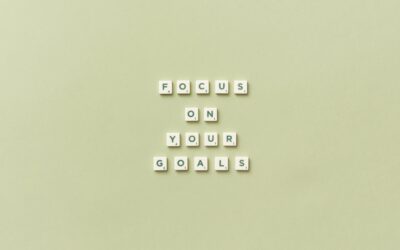Here Are Questions to Ask for Your Brand Development Strategy
Creating a brand development strategy probably seems overwhelming, especially if you’re a fly-by-the-seat-of-your-pants kind of entrepreneur. Most small business owners come up with an idea and execute it without sitting down and fleshing out every inch of what their company will be.
Or maybe that’s just me?
Either way, developing a brand strategy is still the foundation of any successful business, even if you tackle it a bit later in the game. After all, rebranding is absolutely a thing. Companies do it all the time, including companies like Mcdonald’s (having to offer healthier options) or Netflix (sharing is no longer caring, y’all—no one says that all brand strategies are smart). Or what about that time IHOP attempted to become IHOB and was laughed right off the planet?
Regardless of the outcome, it’s vital to create a brand strategy that customers will connect with and in turn, represents what and who your company stands for.
What is a Brand Strategy?
In a nutshell, a brand strategy is creating and executing the perception of your company within the public. This includes the layers of values, messages, and services. It also includes the brand presentation via colors, logos, fonts, icons, etc. It means understanding your target audience, user needs, and integrated marketing plan.
There are all types of brand development strategies, but there are also some core questions you have to ask yourself, which we’ll go over.

How To Develop a Brand Strategy
Okay, now it’s time to sit down and dig into your brand development strategy. Make sure to take your time with these questions—the answers will steer the direction of your success. Perhaps you could do this in an afternoon, but it can also be a working document, in some ways. A living, breathing goal, adaptable to changing markets and ideal clients.
So it’s best to leave some space for evolution and unforeseen changes, e.g., how Blockbuster failed to evolve when Netflix stepped up to the plate. Or how Borders lost to Barnes and Noble.
So here are the questions to ask for a brand development strategy!
What Are Your Top 3 Values?
When you think of the company Amazon, what is the first thing you think of? For me, I think of quick delivery, competitive pricing, and, frankly, having everything I could want. Or what about when you think of the movie production company, A24? So far, A24 does nothing but deliver absolute 5-star movies. I know when I watch one of their movies, I’m going to laugh or be disturbed—there’s no in-between.
Both Amazon and A24 understand the “Why” of their business because they understand “How” they want their customers to feel. Amazon knows people want as close to instant gratification as possible. It also knows people want to save money. A24 knows its viewers want to feel excited or disturbed. They want unique feels that they otherwise would not get or want in their everyday life.
Values boil down to feelings. How do you want your customers to feel? How do you want to deliver that feeling?
These values also guide how employees will treat their clients. These values can boost or hinder the services you offer, even going as far as defining how conflict is tackled.
A couple of examples of value-driven companies.
- The founder of Starbucks once said, “We’re not in the coffee business serving people, we’re in the people business servicing coffee.” Starbucks is known for its ethics, “customer is always right” service and selling high-quality brew with creative flairs. Those are values.
- YouTube has clear values of “Everyone matters.” Through the years, YouTube has encouraged people to share their lives, thoughts, and voices. To do anything otherwise would be a violation of their values. Which brings me to the next question.

What Are Your Top 3 Value-Driven Dealbreakers?
Imagine if Starbucks coffee was suddenly discovered to be made by impoverished humans that are abused and make no money for their labor? What if the coffee was no longer ethically sourced?
How about if YouTube suddenly started preventing people from expressing their feelings and thoughts that pissed people off?
Coming up with value-driven dealbreakers can be difficult, but it’s important to not only consider how you’ll provide these values, but also how you want your customers to deliver these values. For example: If your company has a value of respect, is it truly a value if customers are allowed to be verbally abusive to your employees? Another example: If your company is committed to making a difference in communities, is it truly a value if your company doesn’t donate to or serve the local communities?
So sit down and write at least 3 value-driven dealbreakers for your brand. Not quite ready? Then let’s move on to some deeper stuff.
How Do You Wish to Be Remembered?
Think of a time you went somewhere or bought something. It might be a cheap example, but let’s consider Disney. Now, their motto is, “The Happiest Place on Earth.” Talk about the shortest, but most succinct value statement ever. Disney promises happiness and not just happiness, but the most happiness you’ll ever find on this planet.
It’s so expensive to go to Disney, people save for years. And they show up, expecting rainbows and Mickey to crawl up their butt and spew out fireworks and rollercoasters. Quite a visual, but if you disagree, you’ve never heard what people complain about there. But when their trips go well, they remember forever.
So when a customer walks away from the experience your company offers, how do you want them to feel? Fulfilled? Satisfied? Relaxed?
When it comes to wedding companies and their brand development, professionals have an actual responsibility to help make wedding days one of the best days of their clients’ lives. That expectation from couples needs to be infused into your mission statement and overall values.

What is Your Brand Activism?
According to Business Insider Gen-Z has a spending power estimated of over $140 billion dollars and they’re unlike any other customer. In the article, Jeremy Baker, chief technology officer and co-founder of Retail Zipline, said in a press release sent to Business Insider,
“The reality is they care about connections and community — we know this because they prefer to shop in situations where they can chat with their friends, engage with store associates, and feel confident that their purchase decisions are supporting businesses that treat employees well.”
So with that in mind, how are you taking a stand in this world? What are some organizations that you’re passionate about? Some popular ones are:
Something else to consider: If your company is focused on female empowerment, LGBT rights, etc., then it’s a good idea to find an organization that falls in line with those beliefs.
Who Is Your Ideal Client?
Okay, now that we’ve worked on the foundation of your brand, it’s time to focus on the foundation of your exact buyer persona. You want to boil this down to a 30 second elevator pitch. For example, when I was a wedding photographer, my client elevator pitch was,
“They’re between the ages of 28-40, making a combined income of at least $120k. No kids. They love to travel, have pets they worship, have degrees, and often enjoy solving problems. They’re type-a, communicative, and enjoy going out with friends.”
Through the years, as my own company values evolved, so did my dream client. It eventually extended requiring inclusivity, possibly LGBT orientation, cared about civil rights, and lived a less-than-judgemental life.
So who do you want your client to be? Here are some questions to get you started:
-
- What do they do for a living?
- How much money do they make?
- What is their education level?
- What do they do for fun?
- What do they hate?
- Do they have kids? (This could affect budget constraints)
- What is their budget?
What is Your Brand Archetype?
This has been a recent passion topic of mine when it comes to the process of brand development. I’d never heard of it before and now, it’s all I can talk about when it comes to branding. I’d never thought of the 12 Archetypes as something you could infuse into branding, but it makes sense once you think about it. Brand development is about creating a lasting personality and Carl Jung said everyone has at least one core archetype.
I’ve written a whole blog about the 12 archetypes, but here’s a quick rundown of them.
- The Creator – These are the innovators, the ones that set the bar for everyone else.
- The Sage – These are the guides, the educators, the ones aiming to lift others up.
- The Caregiver – These are the ones who nurture and help others thrive through caring energy.
- The Innocent – These are the ones that keep their goals, product, and mission as clear and clean as possible.
- The Jester – These are the companies focused on entertainment and creating amusing social media and messages.
- The Magician – These are the companies that infuse suspension of belief and bring imagination to life.
- The Hero – These are the problem solvers we all need, the ones that save us from our inconveniences and problems.
- The Ruler – These are the absolutes, the ones that stand for something with a firm hand.
- The Regular Guy – These companies are the Everyday Joe Schmoe.
- The Rebel – These guys are like, “Fuck the system!” and challenge everything we know.
- The Explorer – These are the adventurers, the ones embarking on journeys to explore the unknown.
- The Lover – These are the ones that bring romance and swoon to a brand.
What Are Three Words You’d Describe Your Company With?
This question seems to catch up with a lot of companies trying to build a brand. It’s difficult to figure out how to be unique while trying to describe…their uniqueness. Dig DEEP on this one. “Fun” or “Friendly” isn’t sufficient—anyone in this world could be those—but what makes YOUR company different? For Avery Atelier, my three words are, “Educational. Supportive. Colorful.”
I’ve infused my values with my vision. I want my clients to feel supported—at times, I can be like a therapist—and I want to empower them to feel educated enough to make a decision. And when we create something together, I want to avoid brands/websites that look like any other on the street.
So what are some words you’d describe your brand with?
Some examples:
-
- Adventurous
- Genuine
- Comforting
- Hilarious
- Bold
- Brave
- Classic
- Dynamic
- Instinctive
- Adaptable
- Original
- Spiritual
- Vivacious
- Timeless
- Zany
Now that you have three words set aside, start thinking about what your brand’s personality will be like. Especially in the wedding industry, people want to know how you’re going to add to their overall wedding day vibe.
Do you want your brand to reflect your own personality? To reflect your ideal client’s personality? Whatever you choose, make sure you can stick with it! I’m always voting for being your most authentic self, but you know what your industry needs!
Do Market Research
Market research is so vital, especially as you hone in on what you’re going to offer to consumers. I offer a free competitor research sheet, broken down into the bits you need to pay attention to, not only for brand development strategy but for SEO as well. You’ll want to take a day or two, and really dig deep.
Steps for Performing Market Research
- Go to Google and search for your ideal keyword. Write down the top 20 in the SERPs.
- Visit each page and fill out the market research sheet I’ve linked to.
- Take another day and compare them all. What are the common threads? What makes each one different?
- Then take that info and compare it to your company. How do you stand out?
What Is Your SWOT Analysis?
Now that you’ve done some market research, it’s time to do a SWOT analysis. What is a SWOT analysis? A SWOT analysis is a way to identify Strengths, Weaknesses, Opportunities, and Threats to your company. It can be easier to do the SWOT after market research, to get a better handle on where you stand as a brand.
So sit down and fill out this SWOT analysis. Really consider every angle!
How Do Your Current Clients Perceive You?
Now that you’ve created a perception of your brand and company, it’s time to see how you’re currently executing this vision. This will be a tough one—asking past and current clients to fill out an anonymous questionnaire about you. Ask them to share about their experience with you, what they wish you did differently, and what they loved about working with you.
Write a review from your client’s perspective
Whether or not you like what your clients have to say, it’s time to figure out what you WANT them to say. From start to finish, write what you hope your dream client writes about you at the end of their experience. Touch on:
- Communication frequency
- How you “overcame” issues
- How you made them feel
- The quality of product and service
- What their favorite part of the experience would’ve been
- How you’ve affected their lives.
For example, this is what I would love to have in a review one day:
“Jen was so amazing to work with, from start to finish. When we started working together, I didn’t know where to start. I knew I needed more money, but felt really lost on how to convince potential clients to trust me. When I reached out, Jen was immediately excited and full of ideas. The analysis was done within 3 days and filled with so much info, it made my head spin.
When Jen saw I was overwhelmed, they offered to just take care of it all. And they did! We built a website in three weeks and I invested in six months SEO. Within two months, I was on page one and two for multiple keywords. I’ve increased my revenue by 20% in less than three months. I’m absolutely blown away. I can’t recommend Jen enough!”
This is my dream review. This review reflects how I want my clients to feel, the results I want to produce, and the services I want to offer everyone. So sit down and create YOUR dream review.

What Are Your Long-Term Goals?
Especially nowadays, thinking far ahead can be daunting. For me, with some neurodivergencies, it’s really difficult to think far ahead. I do, however, keep a running yearly goal list. Maybe three or five years seem too far away. So let’s start with one year. For example, in 2023, a few of my goals are:
- Create three websites for my portfolio by December 31st.
- Create a website freebie by September 1st.
- To increase my average position in the SERPs by 30%.
The point of the goals is to make them RAM:
- Reasonable
- Achievable
- Measurable
Don’t set yourself up to fail. Break them down into small bites. For example, increasing my average positioning in the SERPs means I need to write content. But to create that content, I need to do ideation. To do ideation, I need to do competitor research. All goals break down into smaller tasks, making it easier to “chew.”
The Execution of Your Brand Strategy
Here we are, nearing the end of building your branding strategy. *phew* As you can see, executing brand development is such a beast! But let me tell you, it’s so satisfying to have a brand that makes you swoon every time you see it. Because when you have a brand you’re proud of, that means there’s a part of yourself that you’re proud of. And that’s amazing.
But now it’s time to figure out exactly how you’ll present your newly developed brand! After all, we haven’t even touched base on the colors, fonts, logos, etc., of building a brand! So whip out that now-well-used notebook you’ve been using and start writing down exactly how you’ll present your new brand!
Some branding strategy questions:
- Where will you use the logo?
- What colors will you use?
- What are your editorial guidelines?
- What will be your social media presence and schedule?
Final Thoughts
As a branding development company, I love helping people bring their visions to life. To me, branding is a personality, not a presentation. The brand development process is about digging deep and really discovering what you want and need out of your company. The difference between brand development and building a company is… negligible. They’re one and the same.
I’m sure you’ve come to realize that I offer brand development services and that we’ll dig deep into your hopes and dreams. I’ve listened to fears and helped clients overcome them. In the end, that’s always our biggest block: our fears. So make sure to reach out so we can chat more about how your life can change for the better.








